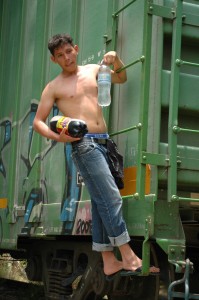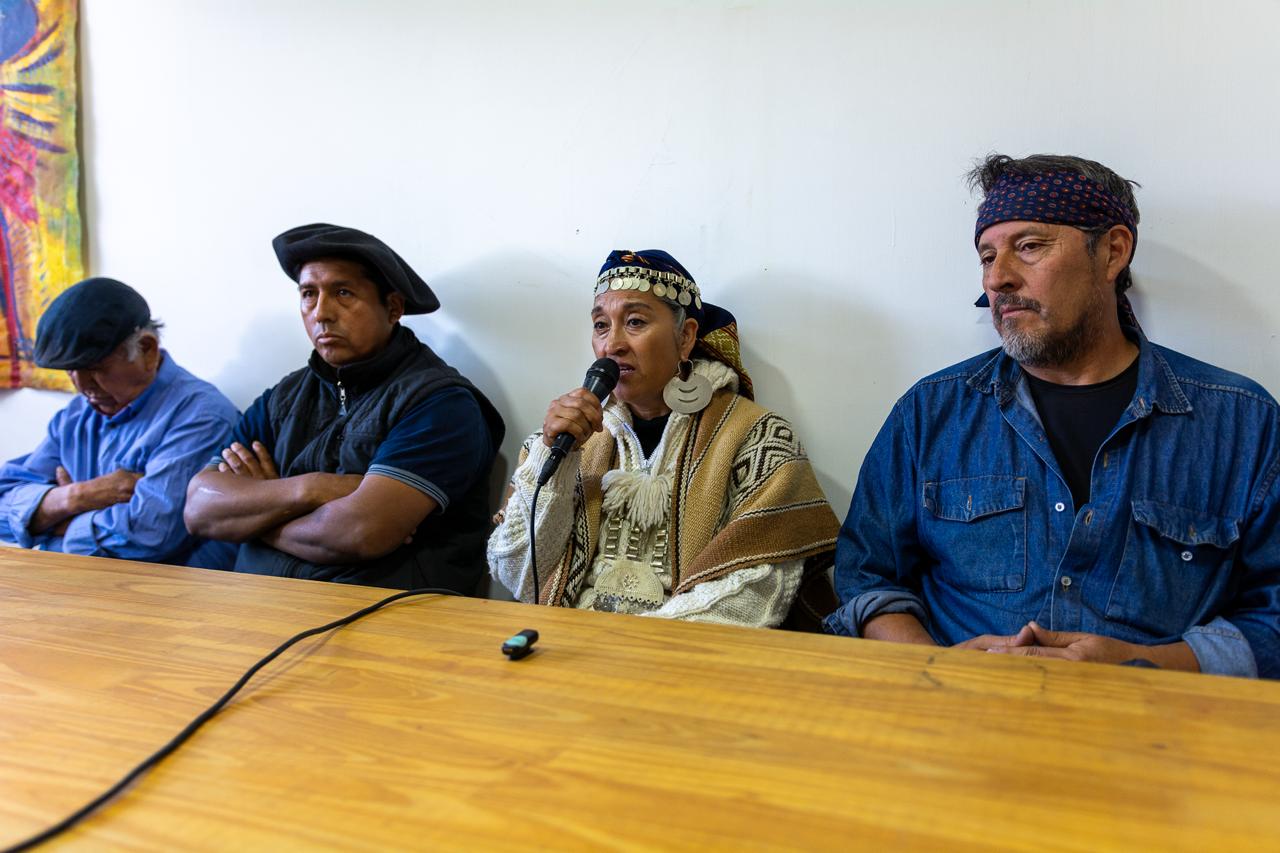
One of the women lay face up, her torso cutting a diagonal line across the railway track. The other lay face down, her right leg splayed over the same track at the thigh. Both wore reddish tank tops and pants that went down just below the knee. A police officer with an automatic weapon watched over the bodies.
It was far too late to do anything to help. Little yellow numbers, from one to six, were placed on each piece of ballistic evidence, grim reminders of how Mexico is refashioning its police after the US model.
According to local media, the women were murdered by stab and bullet wounds in the late afternoon on May 30. A preliminary report suggests they refused to pay the quota charged by a criminal group after climbing up on the train. Their bodies were found later that same day just north of the Mexican tourist town of Palenque, in Chiapas.
Both women were from Honduras–Mexicans don’t risk traveling on cargo trains when they migrate through their country toward the United States. Most Central Americans traveling through Mexico do so as undocumented migrants. This means they are not afforded the right to free movement.
If they board a bus, undocumented migrants in Mexico can be pulled off and deported by soldiers at numerous checkpoints dotting northern-bound highways. Without paperwork, they can’t make it past the airport service counter. Thus, the train remains the most accessible means of transport for Hondurans, Guatemalans, Salvadorans, Nicaraguans, and others who hope against hope they’ll make to the US and find employment.
The double murder on the train tracks in Chiapas took place on the heels of an Observation Mission into the conditions of migrants in southern Mexico, coordinated by the Mesoamerican Migration Movement. The Mission, led by activists and members of the Catholic Church as well as journalists based in Veracruz and Mexico, made its way from Orizaba, in Veracruz state, to Tenosique, a municipality in Tabasco state, which borders Guatemala.
On the last night of the four-day Mission, participants stayed overnight at La 72, a migrant shelter in Tenosique. The shelter was opened following the discovery of the bodies of 72 migrants on a ranch in San Fernando, in the border state of Tamaulipas in August of 2010. It takes its name in honor of the memory of the dead.
A report from the mission was prepared by participants and delivered to four members of Mexico’s senate who visited the shelter on May 28.
“What motivated us to carry out this mission is the tragedy, the new tragedy that came to light through the media in Cosoleacaque, in the community of Barrancas, when the train was attacked,” said Fray Tómas Gonzalez Castillo when the report was presented to senators.
“This tragedy has had aftershocks, just like after an earthquake, just recently on May 14, here in Tenosique, the train was stopped and there were kidnappings, we’re looking after the victims now, though they are not present today for security reasons,” he said.
The report’s final text rejected the official version of events related to the attack on migrants in the evening of May 1in Barrancas, in southern Veracruz. Dozens of migrants were wounded, one seriously, after they were attacked while riding the cargo train.
Members of the state government claimed the migrants were wounded because of infighting between migrants. But when hundreds of people descended from the train and sought refuge in the village of Las Barrancas, they told local authorities that they were attacked on the train related to the payment of a quota.
South of Las Barrancas, in Las Choapas, Veracruz, members of the Observation Mission, witnessed a train passing carrying between 1,000 and 1,500 migrants. As the train stopped and started as machinists added another car, we watched passengers got off to buy food, pop and water from local vendors along the tracks.
Some on the train that day claimed they were told they would be required to pay four $100 quotas to travel through four stations, each controlled by criminal groups. Those who don’t pay are kidnapped and ransomed, assaulted, killed or disappeared.
“Today there’s a lot of death along the train tracks, and we want support as migrants, a permit or something, so that we can follow the path to our dream, our dream is to arrive to the United States and help our people,” said Gustavo Adolfo, a Garifuna man from Honduras on his way up to the US.
“Over the last years thousands of migrants have been disappeared and thousands have died on the trains without their families ever finding out what happened. We are victims, we are kidnapped, and we die as innocents.”
In the places the Mission visited in Veracruz state, church groups and local organizations provide assistance to migrants, including shelter, meals and legal aid.
“The participation of the government, for it’s part, lacks organized, coordinated assistance for people who are migrants,” reads the report. “Among various agencies, the services offered are intermittent, lacking, and in some areas and cases, null.”
Those who have stepped in to assist migrants have also been threatened and intimidated for their work. “Around two years ago there started to be complaints in this region, complaints of human rights abuses thathave been taken to the authorities, and the activists here have received threats for their work,” said José Jacques, a former legislator who took part in the Mission and in the writing of the report.
There was a time when the extortion and murder of migrants was primarily an issue in the US-Mexico border region. Over the past years, Mexico’s southern region has also become a hellish passage for migrants.
The report ends by echoing a general sentiment that “Mexico is a graveyard for migrants.” The appearance of the bodies of two women migrants murdered two days after the document was released is a dreadful confirmation of their conclusion.
Dawn Paley is a freelance journalist and independent researcher. She was the only foreign journalist to take part in the Observation Mission. Find more of her work online at dawnpaley.ca. She is a regular contributor to the Americas Program www.americas.org
For More Information:
See the report in Spanish here: http://www.movimientomigrantemesoamericano.org/archives/2037/reportemisiondeobservacion-3
“Human Rights Caravan Protests Migrant Kidnappings”, Christine Kovic, Americas Program, https://www.americas.org/archives/5267
“Riding The Beast”, Christine Kovic, Americas Program https://www.americas.org/archives/5287



